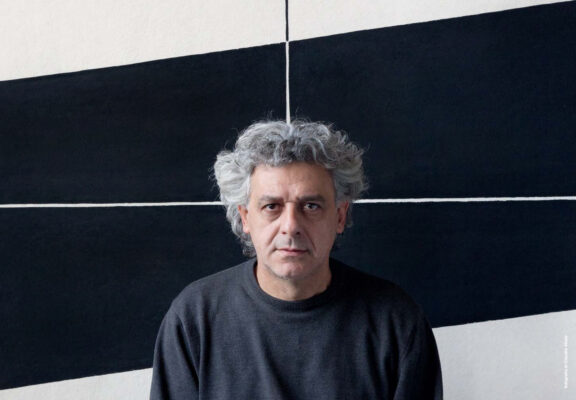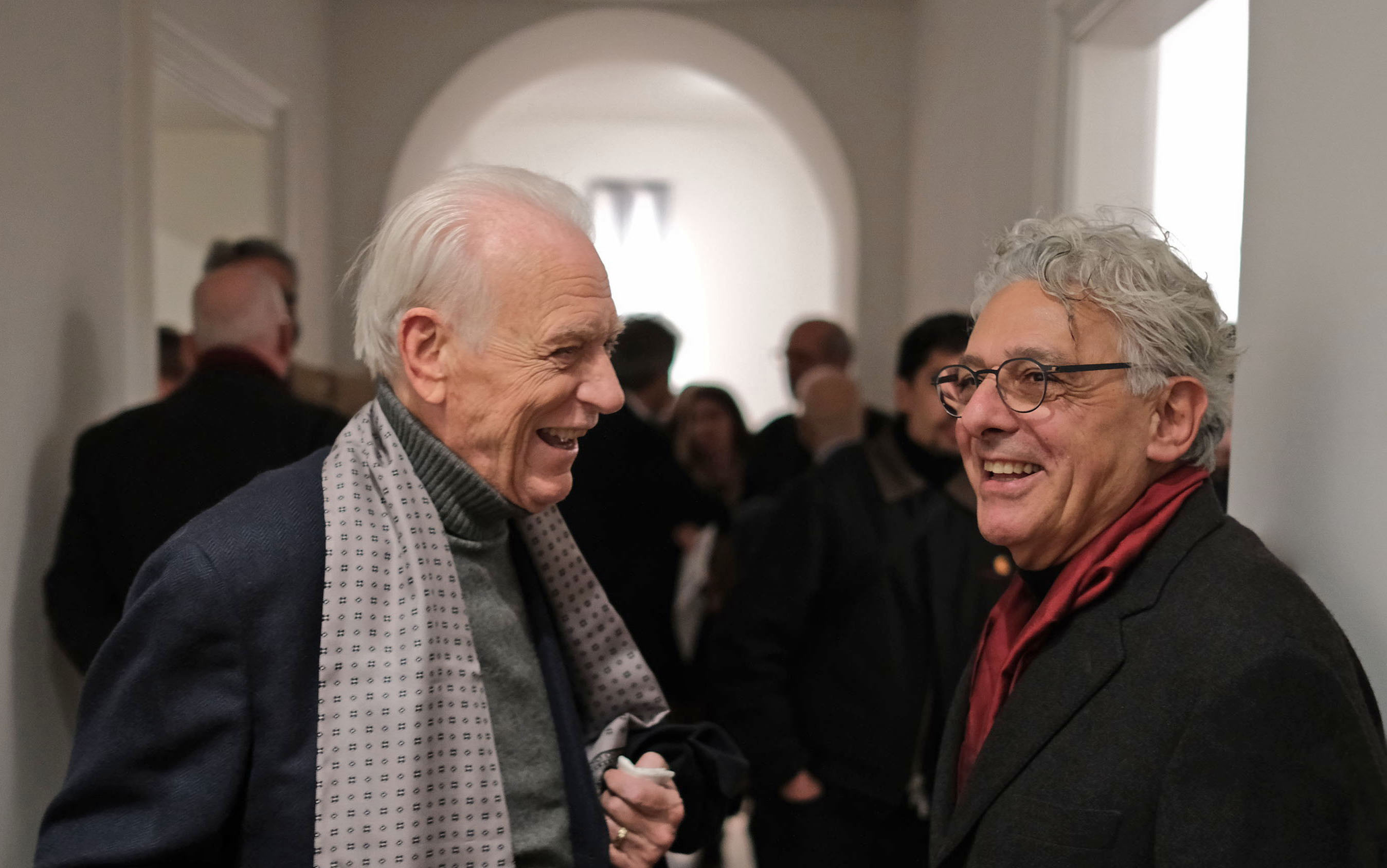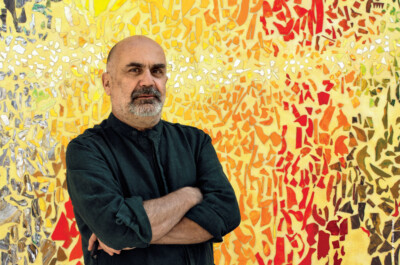Nunzio Di Stefano was born in 1954 in Cagnano Amiterno, in the province of L’Aquila. He studied in Rome at the Academy of Fine Arts, graduating in the scenography course held by Toti Scialoja. In 1973 he opened a studio in the former Pastificio Cerere in Rome, in the San Lorenzo quarter, where Bruno Ceccobelli, Gianni Dessì, Giuseppe Gallo, Piero Pizzi Cannella and Marco Tirelli also work.
His first solo-show was in 1981 at the Galleria Spatia in Bolzano, where he presented a series of plaster sculptures installed on the wall and a series of watercolours. In 1984 he exhibited large-scale plaster sculptures at Fabio Sargentini’s L’Attico in Rome in an important personal exhibition presented by Giuliano Briganti. Then he appeared in the Ateliers exhibition organized by Achille Bonito Oliva, which brought together the artists working in the San Lorenzo studios. His debut in the United States took place in 1985 in New York with a one-man show at Annina Nosei, which contributed to the international diffusion of his work. His early sculptures with lead and burnt wood appear for the first time at L’Attico in 1986, between February and March; some of them were re-proposed in the following summer at the LXII Venice Biennale, where he wins the Prize as the best young artist.
His personal exhibition at the Galleria Civica in Modena dates back to October 1987, his first in a public space. Between the end of the 1980s and the beginning of the 1990s, there was an intense succession of exhibitions both in Italy and abroad. Galleries that host his one-man shows are Galerie Triebold, Basel (1989); Galerie Di Meo, Paris (1989); Marilena Bonomo Gallery, Bari (1990); Goose Gallery, Rome (1991).
The 1980s and early 1990s were marked by his participation in group exhibitions abroad, including: L’Italie aujourd’hui, Center National d’Art Contemporain, Nice (1985); Nuove trame dell’arte, Castello Colonna, Genazzano (1985); Anniottanta, Galleria Comunale d’Arte Moderna, Bologna (1985); 1960-1985. Aspekte der italienischen Kunst, itinerant in various German museums (1986); the VI Biennale, Sydney (1986); the XI Quadrennial, Rome (1986); the XLII Venice Biennale in the Aperto 86 section (1986); Prospekt 89, Frankfurter Kunstverein, Frankfurt (1989); Roma interna, Museum Moderner Kunst Stiftung Ludwig, Vienna (1991); III Istanbul Biennial (1992).
In 1993 Nunzio Di Stefano was invited again to the Venice Biennale, where he returned in 1995 with a personal section, which earned him an Honorable Mention. In 1994 the Kodama Gallery in Osaka hosts his first solo exhibition in Japan, followed, the following year, by his participation in the II Fujisankei Biennial where his sculpture Ombre, created for the spaces of the Open-Air Museum in Hakone, won the Prize for Excellence. In the same year he held his personal exhibition set up in Villa delle Rose in Bologna, which documented the work of the last decade. His first bronze works were presented in 1997 at the Galerie Alice Pauli in Lausanne, where he returned to exhibit in 2001 and 2010.
2000 opened with a one-man show at the Galleria Fumagalli in Bergamo. The rich anthology from 22 January 2005 at the Macro in Rome, organized by Danilo Eccher, offered the opportunity to retrace the entire creative path from the beginning to the most recent results. In December of the same year he held his first solo show at Galleria dello Scudo in Verona, curated by Lea Vergine, where he presented a series of installations in burnt wood that created alienating relationships with space. In 2007 he took part in the group show San Lorenzo in Villa Medici in Rome. Two years later was the participation in Italia Contemporanea. Officina San Lorenzo, exhibition curated by Daniela Lancioni at the Mart in Rovereto.
In the winter of 2011-2012 Nunzio returned to exhibit at the Galleria dello Scudo in the show Pentagramma (Pentagram) with a selection of large-size works on paper. The constant presence of the curved line, recurring above all in the graphic work, emphasized the rhythm of a plastic research always aimed at new solutions of compositional synthesis. In 2012 he was featured in the review Senza titolo - Nunzio & Dessì: two Italian Artists from the Biedermann Collection at the Museum Biedermann in Donauesching. Among the most recent initiatives, we recall the personal exhibitions in 2016 at the Museo Riso in Palermo and at the Pinacoteca provinciale of Teora, near Avellino, then the invitation to appear, together with 11 other artists, in the exhibition Ytalia – Energia Pensiero Bellezza set up in 2017 at Forte Belvedere and in Palazzo Marino Marini in Florence.
Nunzio Di Stefano lives and works between Rome and Turin.










